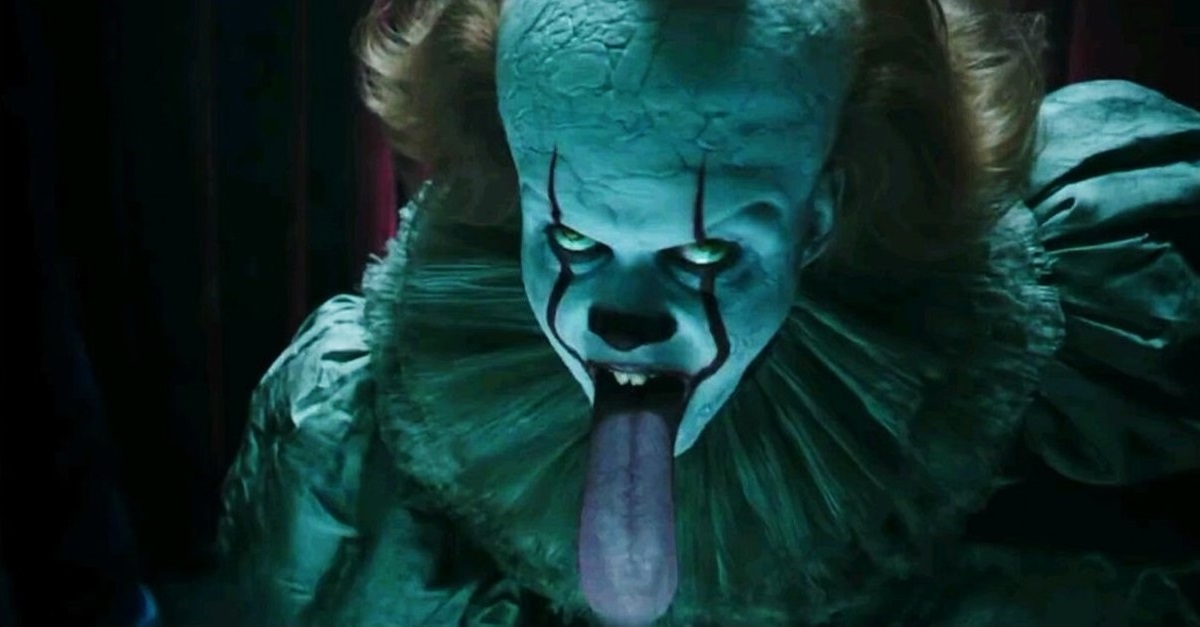(Mild spoilers for Chapter One and Two ahead!)
So far in the history of IT, we’ve had Stephen King’s cocaine-bender trippy prose, Tim Curry’s low-budget but adorably goofy antics, and Bill Skarsgard’s horrifyingly drooly performance. But I think it’s safe to say that this iteration of Stephen King’s 1986 brick-like tome is the most baffling yet.
A sequel to 2017’s IT Chapter One (which was a massive success, a breakout movie for the young cast and a new icon in the horror genre), Chapter Two takes place 27 years later and follows the now grown up Losers’ Club, (cast includes James McAvoy, Jessica Chastain, Bill Hader, Isaiah Mustafa, Jay Ryan and James Ransone), as they return to their hometown of Derry, Maine. Attempting to finally end the reign of terror that has waged on for centuries, they have to kill Pennywise the Dancing Clown (played again by Bill Skarsgard), whose chilling performance in Chapter One most likely murdered the entire clown industry.
When I walked out of the cinema and started comparing the two movies, it seemed obvious that the first one was better, but I couldn’t figure out why. Both films were well made and well acted. Both timelines in the book were incredibly strange in their own way, but still enjoyable to read. Why were the adults suddenly not as engaging as the Losers we grew to love in Chapter One? Then it hit me.
The Losers have grown up. The sequel hasn’t.
Instead, it’s trying to do everything. Is it a horror movie? Is it a comedy? Does it want to build suspense? Does it want to gross us out? Does it want us to care about the characters? Does it want us to laugh? Does it want us to cry?
Yes.
In trying to capture the exact same style as the original, Chapter Two suffers from jarring tonal shifts. Scenes that are meant to be scary are undercut by one-liners or desperate attempts to capitalize on comedy. Scenes that are meant to build suspense suddenly ruin it with stupidly obvious jump scares. Scenes where we are meant to feel emotion for the characters are quickly swept aside in almost hyperactive storytelling. It is arguable that shifts in tone were a problem in the first movie, as the juvenile world of childhood can easily swing from dramatic to comedic in a heartbeat, but it was what made Stephen King’s characterisations of the Losers feels so endearing, However, Chapter Two tries to have its cake and eat it too, and the result is a confusing shambles of over-the-top humour mixed with short moments of sincerity.
Then there are the scares.
The scares from the first film have always stuck with me as some of the most creative ways to show horror. And while the sequel does include some tense moments and interesting designs, none of the scenes seem as horrifying. Take the flute lady from Chapter One. This scene was the best of the whole movie for me, as the horror is deliberately understated. It’s not overly loud, the sound cues are expertly timed, most of the visuals take place in the shadows and when the creature is eventually revealed, she just smiles. When compared to the scares in Chapter Two, all the creatures run after us screaming and gibbering. Or they just get sillier and sillier… And then the big red balloon pops and reveals a zombie kid. Then the kid starts decomposing and he’s covered in worms. Then the worms start growing baby hands. When a scare is THIS overstated, it’s just not as terrifying.
Like the 2017 movie, Chapter Two is surprisingly book accurate. Too much so. It’s never easy to adapt a Stephen King story, in all its panoply of detail, into a manageable film runtime, but trying to include everything means this film feels bloated, often moving at a snail’s pace. It also results in surplus plot holes, story threads that go nowhere and characterisations that feel hammered into our skulls through overuse. We’re also bombarded with call backs to the first movie, (and a couple of hilarious nods to the miniseries). Sometimes it works, but sometimes it feels like the film is going through the motions.
Another problem is the serious overuse of the main character. Bill Skarsgard’s Pennywise is always enjoyable, especially in the scenes where he’s given more dialogue. But I guess the film shot itself in the foot from day one, as now we’ve been exposed to Pennywise for two whole years. Instead of being a few terrifying seconds in a trailer reveal shot, now he’s just another horror character coming back for more, like Freddy Kreuger or Michael Myers. And in the sequel’s grand effort to be bigger and better, Pennywise inadvertently becomes as hilarious as Tim Curry’s iconic “wa-HA, wa-HA, wa-HA.”
Despite these clear drawbacks, there are still many good things about this film. The CGI is creative, the actors are all giving great performances and there are some legitimately funny moments and enjoyable scares. The movie’s portrayal of hate crimes, vicious murders and domestic abuse rides the line between tasteful and gratuitous, but when the film isn’t throwing everything in our faces and tries to be sincere, it really can be sincere! James McAvoy as Bill Denborough trying to overcome his survivor’s guilt is a memorable plot thread, and Bill Hader as Ritchie Tozier is the standout of the whole film, prompting both laughs and tears from the audience.
With returning director Andy Muschietti (Mama) and a score by Benjamin Wallfisch (Blade Runner 2049), you can tell this film is a labour of love. But it’s frustrating as well. There are many enjoyable elements, but there is also so much wasted potential. This sequel could have been just as great as IT Chapter One, and probably one of the best horror movies of this year, if it wasn’t so determined to have the last laugh.
Verdict: 2.5/5
Words by Rachel Denham-White

